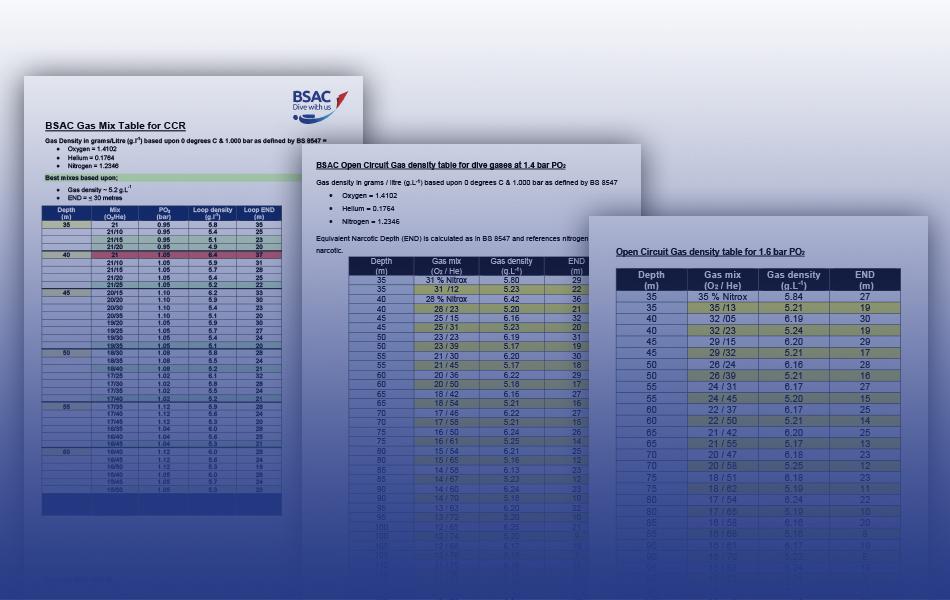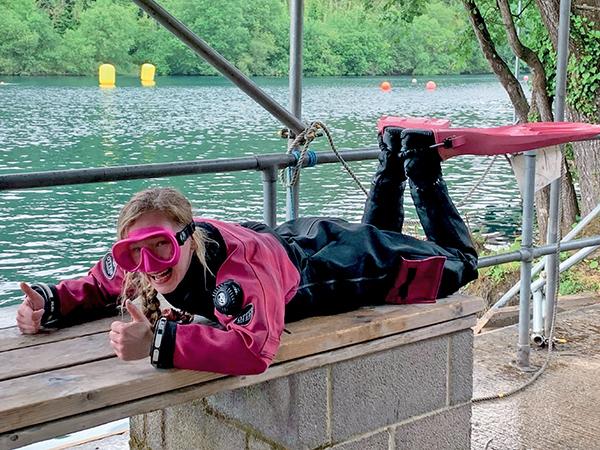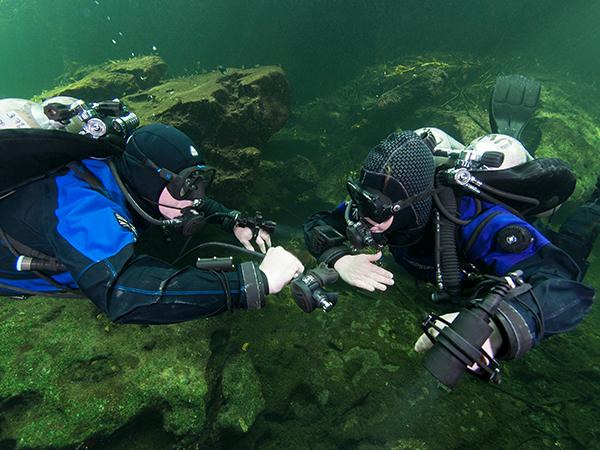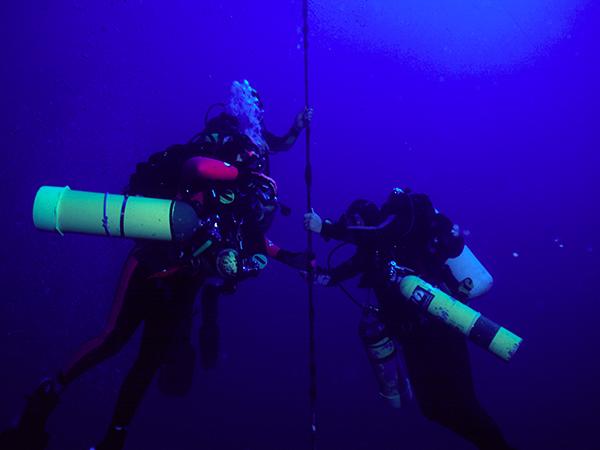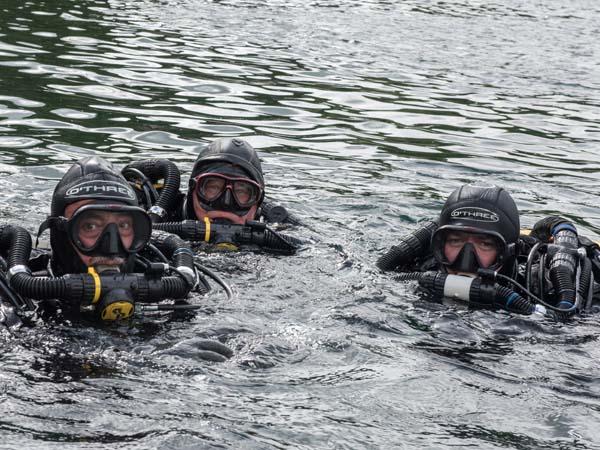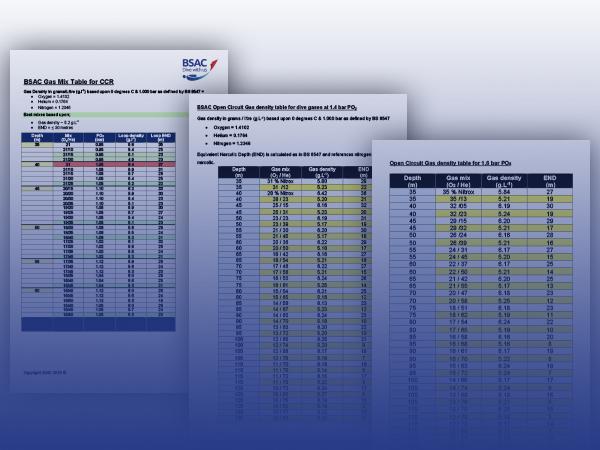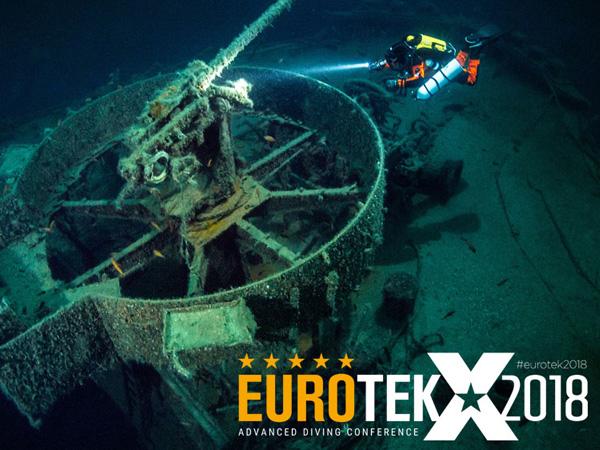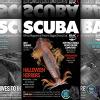Research published in a 2015 scientific paper entitled Respiratory Physiology of Rebreather Diving by Gavin Anthony and Prof. Simon Mitchell established recommended gas densities for gases used in diving.
The paper was specifically aimed at rebreather diving but the research and conclusions are equally applicable to open circuit diving. BSAC has accepted their recommendations in full.
BSAC guidance can be downloaded using recommended diving gas mixtures for open circuit diving (.pdf)
The research established the following gas density parameters;
- 5.2 g.L-1(grams per litre) or lower is a recommended safe gas density for use as a diving gas.
- 6.3 g.L-1 is the upper limit where research has shown a diver becomes significantly more likely to experience carbon dioxide (CO2) retention due to impairment of their ventilation caused by increased work of breathing.
CO2 retention leads directly to CO2 toxicity and indirectly increases the potential for divers to suffer from oxygen toxicity, inert gas narcosis and decompression illness (DCI).
There is also an increased potential for divers to suffer immersion pulmonary oedema (IPO) when breathing gases of elevated gas density underwater.
These values are supported by data from 20 years of scientifically controlled and monitored dives.
Gas density and equivalent narcotic depth (END)
Traditionally BSAC has established recommended gases for diving based upon the partial pressure of oxygen (PO2) and equivalent narcotic depth (END) as follows;
- PO2 maximum 1.4 bar at target depth
- END
- Recommended 30 metres
- Maximum 40 metres
BSAC has now constructed gas density tables that show gas densities and END values for depth increments of 5 metres from 35 metres down to 130 metres.
These tables clearly demonstrate that if a breathing gas density at or less than 6.3 g.L-1 at target depth is selected then the END will always be at or shallower than 30 metres. Conversely, if the gas choice is based on an END of 30 metres the gas density may be well over the recommended maximum of 6.3 g.L-1. This is particularly apparent with mixed gas diving and as depth increases.
What this means in practice is that gas planning should no longer be governed by the END but instead by:
- the maximum partial pressure of oxygen (PO2)
- gas density
Air and nitrox diving
BSAC has updated its recommendations in the Safe Diving document to reflect the above research. In terms of air diving the equivalent depths for the above gas density parameters are:
- 5.1 g.L-1 for air = 30 metres
- 6.3 g.L-1 for air = 40 metres
This clearly indicates that using air deeper than 40 metres puts a diver firmly into the increased risk zone.
Nitrox will have slightly higher gas density than air due to the fact that oxygen is slightly higher density than nitrogen. For example;
- 36% EANx @ 30 metres = 5.2 g.L-1
- 28% EANx @ 40 metres = 6.4 g.L-1
Open circuit mixed gas diving
In line with this new research, BSAC recommends divers choose optimum breathing gas mixes based upon a maximum PO2 at target depth of 1.4 bar and gas density of 5.2 g.L-1 at the target depth of the planned dive but in any case not more than 6.3 g.L-1 at target depth.
Appropriate gas densities for given depths are shown in the BSAC 1.4 bar gas density table.
As a consequence, BSAC is revising its parameters for breathing gas mixes for each of its open circuit mixed gas certifications as follows;
Sports Mixed Gas Diver (50 metres maximum depth)
- The breathing gas at target depth should:
- Have a maximum PO2 of 1.4 bar
- Have an optimum gas density of 5.2 g.L-1 or less but in any case not more than 6.3 g.L-1
- In any case, contain not less than 21 % oxygen and not more than 40% helium.
- For example, the optimum breathing gas for a 50-metre dive = 23/40 (23% oxygen – 40% helium – 37% nitrogen)
Explorer Mixed Gas Diver (60 metres maximum depth)
- The breathing gas at target depth should:
- Have a maximum PO2 of 1.4 bar
- Have an optimum gas density of 5.2 g.L-1 or less but in any case not more than 6.3 g.L-1
- In any case, contain not less than 18% oxygen and not more than 50% helium.
- For example, the optimum breathing gas for a 60-metre dive = 20/50 (20% oxygen – 50% helium – 30% nitrogen)
Advanced Mixed Gas Diver (80 metres maximum)
Advanced Mixed Gas Divers are trained to use custom gas mixes including hypoxic mixes therefore the criteria for bottom gas choice is based upon PO2 and gas density as follows:
- The breathing gas at target depth should:
- Have a maximum PO2 of 1.4 bar
- Have an optimum gas density of 5.2 g.L-1 or less but in any case not more than 6.3 g.L-1
- For example, the optimum breathing gas for an 80-metre dive would be 15/65 (15% oxygen – 65% helium – 20% nitrogen)
Other gas planning considerations
Travel and decompression gas mix choices are governed by the same criteria of PO2 and gas density however Isobaric Counter Diffusion (ICD) needs to be taken into account in the normal way with a maximum partial pressure of nitrogen (PN2) differential between the switching gas mixes of approximately 0.5 bar at gas switch depth.
BSAC's open-circuit gas density table for 1.4 bar PO2 should be used for open circuit mixed gas planning.
All other dive planning protocols are unchanged and remain as your mixed gas course stipulated.
Proof of certification parameters
These new BSAC gas mix parameters for each open circuit mixed gas diver grade are effective immediately and BSAC open circuit mixed gas certifications now enable the new gas planning parameters for each mixed gas diver grade as stated in this document.
This document will be placed on the BSAC website as proof of gas parameters allowed for each diver grade should proof be required by BSAC Branch Officers or third parties such as gas blenders or dive centres.
BSAC HQ will also update individual current Sports and Explorer Mixed Gas Divers records to include the new gas parameters on their MyBSAC page.
Upgraded qualification cards are available from BSAC HQ on request should members prefer to have them. This service will be available to members who are already qualified BSAC Sports Mixed Gas and Explorer Mixed Gas Divers and after their MyBSAC entry has been updated.

